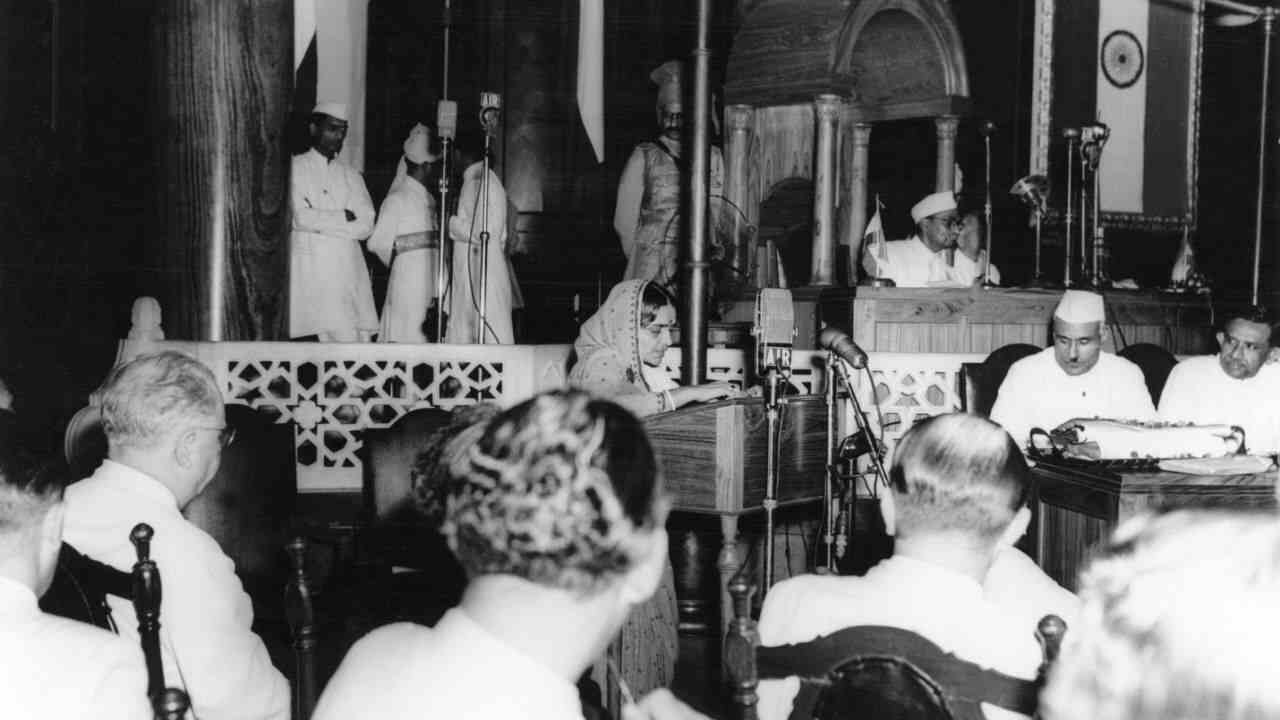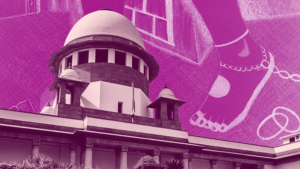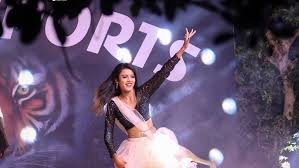Why A Feminist Engagment With Constitution Is Necessary

Seventy years ago, on 26th January 1950, India’s constitution came into force. The constituent assembly which started its debates on 9th December 1946, took 2 years and 11 months to frame the constitution.
Surbhi Karwa has analysed the constituent assembly debates from a feminist lens for her LLM thesis- looking at its composition and gendered nature of some of the debates. In a detailed interview with BehanBox, Karwa, an alumnus of National Law University (NLU), Lucknow and gold medallist from NLU,Delhi, outlines why a feminist critique of the constitution is important and lays out the gendered language, themes and representation in the constituent assembly debates.
Why is a feminist critique of the constitution and especially its making process necessary? What questions prompted you to look at the constituent assembly debates from a gender lens?
A feminist critique of constitution making process is necessary for four reasons.
First, constitutions impact women including those provisions that are neutral. Research by scholars like Helen Irving and Vicki C. Jackson has shown that supposedly neutral provisions like federalism, amendment procedure and the language of the constitution have a gendered impact.
Secondly, constitutions are made for a long time and have an impact for generations to come. For example, in the Indian constitution debates, women members had unanimously rejected reservations or any sort of ‘special privileges’ for political participation of women- the consequences of which are felt even today, when political representation of women is as low as 14% in Lok Sabha and on an average of 9% in State Legislative Assemblies.
Third, the founders make range of choices at the time of making of constitutions, including feminist choices. For example, whether the constitution talks of formal equality or substantive equality or whether there can be provisions for banning patriarchy in constitution. If we were to imagine a what a feminist constitution could be , there cannot be a monolithic answer to it. In the Indian Constituent Assembly debates, one of the members Rev. Jerome D’Souzaa proposed for the recognition of the institution of family and its sanctity by state to be incorporated in the constitution. It did not see the light of the day, but if a provision like that were to be incorporated, imagine the impact it would have had on the lives of women because family, as we know, is a site of patriarchy.
The fourth reason is that constitutions in democratic countries are made in the name of people. Our constitution also begins with “ We the people”. The question, then, is who are the people? The Constituent Assembly has often referred as men’s club. Hence, we need to understand the Constitution- its provisions, potential and limitations for genders other than men.
Further if you take a comparative account, there have been some countries where there have been gender audits of their constitution and its making process. For eg, South Africa and Nepal. In 2015, Nepal published a 905 page long report on their new constitution and role of women in that process. In India, there has been a mythologising of the constitution and its making, especially in the work of Granville Austin. In fact there is potential for global comparitive project on understanding constitution with a feminist lens.
What can you tell us about the representation of women in the Constituent Assembly itself?
Constituent assembly has been often called a “men’s club” and voices of women were historically absent. Indian constituent assembly was no different. It had only 15 women among its 299 members, which is just 20%. I argue that even among them participation was less than active. In my analysis I found that 5 of the 15 women never spoke in the assembly. I have to add a caveat that I have looked at the constitution assembly debates only and not the debates within the many committees.
In the debates, even women like Sarojini Naidu and Sucheta Kriplani had limited interventions. For eg Sarojini Naidu spoke twice in the assembly- once she congratulated Dr. Rajendra Prasad for becoming chairman of the Constituent Assembly and second on the resolution on the national flag.
This lack of representation of women is also visible in the committees of the constituent assembly. There were no women in the drafting committee that chaired by Dr. B.R.Ambedkar. Other committees like Union Constitution Committee, State Committee, Business Committee etc had no women. In the Advisory Committee which had two sub-committees (Fundamental Right Sub Committee and Minority Sub Committee), there were 3 women out of the 64 members. These were Hansa Mehta, Rajkumari Amrit Kaur and Begum Aizaz Rasul.
What were the reasons for such low representation of women?
Although more research needs to be done, the constituent assembly in general faced challenge of democratic deficit since the members were chosen by indirect election by the members of the Provincial Legislative Assemblies. Elections to provincial legislatures had certain limitations on holding property,education qualifications and gender. And these harmed women more than men. According to Census data of 1941, female literacy was 7.3% whereas it was 25% for men. It is safe to assume that very few women actually participated in the process which ultimately led to the composition of Indian Constituent assembly.
What can you tell us about the composition of women members of the assembly and their socio economic positioning?
Most women members of the assembly came from a privileged background with a lot of social, political and cultural capital and access to education, sometimes foreign education. They came from families of political leaders, lawyers, civil servants etc. There was only one dalit woman, Dakshayani Velayudhan and one Muslim woman- Begum Aizaz Rasul. Constitutions are often defined as nationalistic projects of the elite of the country and women’s participation in India’s constitution making process was elite as well. Geraldine Forbes in her book ‘Women in Modern India’ calls the feminist movement during the freedom movement as ‘ too Hindu, too upper class,and too urban elitist’. It was the same limitation was visible in the constituent assembly too.
Were there any discussions on the poor representation of women in the constituent assembly debates?
Interestingly, Jaipal Singh Munda, a tribal leader from erstwhile Bihar province did point out about the lack of a single tribal woman while talking of tribal representation in the advisory committee
On another occasion, Purnima Banerji, a member from the United Provinces proposed that Provincial legislatures seats vacated by women should be filled with women only. To this she gets a very sexist reply from HV Kamath who says- “…. (in affairs of governance)… where we have to be cold and calculating in dealing with various kinds of men, women would find it rather awkward and difficult to deal with such persons …….the head may not play the part that it must play in the affairs of government. If the heart were to rule and the head to take a secondary place then it is felt by many thinking men, and thinking women too, that the affairs of government might go somewhat awry, might not fare as well as we might want them to be.”
So essentially, women’s representation question did not get much attention and even when it did in a couple of instances, it was dismissed with sexist replies. In fact when Purnima Banerji while introducing her proposal does mention that she might be opening herself to ridicule by her proposal. This says a lot about how questions of women’s representation were seen in the assembly.
You mentioned earlier that women in the assembly rejected any special provisions for their political participation. Why was it so and could you give us instances of how the debates proceeded?
Women in the constituent assembly overwhelmingly rejected any “special provisions for political participation.
We need to see this in the context of the Freedom movement and especially the Communal Award of 1932 which retained separate electorates for different classes and religions as well as Partition to understand why asking for any sort of reservation had become a bit of a taboo. asking for any sort of reservation had become a bit of a taboo. Anupama Roy has pointed out in her work on gendered citizenship that reservation for women was seen as ‘extension of a wrong principles in women’s affairs’. In fact women were congratulated in the assembly for rejecting any sort of reservation Similarly Pattabhi Sitaramayya, the member from Madras province, says in the assembly that women have shown extreme courage and imagination in rejecting separate provisions and shown the way to Muslims. If you look at the women members, you notice a sense of pride among women members that they have refused reservation.
But there is a second leg of arguments which emerge from women members for rejection of any sort of reservation for women. Here, I am using the term ‘reservation’ in a broader sense to mean any sort of provision for ensuring equal political participation for women. Women members see reservation as a deviation from equality, as something which is a ‘privilege’, a kind of ‘special treatment’. It is not seen as an extension of equality principle itself.
Renuka Ray gives the example of Vijaylakshmi Pundit and argues that Pundit (who was a successful diplomat) not been selected because she is a woman nor was sex
made a bar to the appointment. This essentially hints towards a formal understanding of equality. The question of reservation for women could only be thought in reference to Pundit and not in reference to a woman discriminated on various intersections like a Dalit women or an Adivasi women prima facie hints towards formal equality. What formal equality does is that it prioritises privileged women whose social and economic class is somewhat similar to men. Renuka Ray, in facts, finds it an insult to her intelligence and capacity to talk of any sort of reservation.
You mention in your thesis that some of the gender issues were laced with a notion of ‘protectionism’ in the constituent assembly debates? Could you, perhaps, illustrate such instances?
Protectionism is the use of law to essentialise women as victims who need protection and advocate for the need to make safety provisions and restrict their freedom. In the constituent assembly, there are two instances when protectionism comes into play.
First, during the debate on prostitution. The question of prostitution is heavily debated in feminist jurisprudence in what Nivedita Menon calls as ‘victim- agent dilemma’. But in the constituent assembly the only discourse that comes up regarding sex work is women as victims. In the debates, the question of prostitution was only discussed in reference to Article 23 i.e. in reference to human trafficking and beggary. Assembly members saw prostitutes as ‘women who were at the mercy of their exploiters’. Women saw them as their ‘fallen sisters’. The entire debate on prostitution in the assembly happened with a protectionist gaze, i.e. the need of protecting and rehabilitating these women.
It was not as if there were no alternative voices present during that time. Geraldine Forbes writes in her book that not all Devadasis and sex workers were in support of this protectionist approach. Left leaning women had their own opposition. In 1958, within few years of the adoption of the constitution, a sex worker named Husna Bai claims her agency as a sex worker to carry on her trade and profession. She filed a writ petition in the Allahabad High Court under Article 226 of the Constitution challenging the constitutional validity of the Suppression of Immoral Traffic in Women and Girls Act, 1956 (SITA). But these voices never made it to the assembly.
Protectionism was also visible in reference to proposal that women should not be working in mines and factories beyond certain hours in reference to Article 39E of the constitution. While there is a feminist argument to be made for reasonable work hours for women from a rights perspective as seen in Vasantha R.’s case, in the debates the proposal were introduced with an essentialist view of women. For example, H.V. Kamath suggesting that after the word ‘age’ or ‘strength’ the word ‘sex’ shall be added in Ar. 39(e) so that women are not forced to take up an occupation which might not be ‘suitable to the condition imposed upon them by nature’.
Lakshminarayan Sahu, a member from Orissa, had similar proposal arguing that he ‘does not like that women should work day and night and adopt a profession that may spoil their home life’. Damodar Swarup Seth also demanding similar proposal says, “no protection has been provided for the fairer and softer sex …it is just and desirable that the addition suggested should be made in this article so that women may also be provided with due protection and may not be employed in mines at night and in industries which are not suited to their delicate health and position in society.”
So you see an attempt is being made to use constitutional provisions for restricting freedoms and choices of women in the name of their protection.
In your thesis, you do a linguistic analysis of the debates and find instances of sexism in the debates. Could you elaborate on those?
Feminist critique of language shows us that language too is reflective of social hierarchies. Language tells us who is the priority and who is the ‘other’. Legal language too speaks in his/him/he language. The supposed universality of masculine pronouns actually serves as a clock for historic othering of women. The constituent assembly too uses the “ he includes ‘she’ “ argument. HJ Khandekar, a member from Central Provinces and Berar, had proposed twice that both he and she should be used in the language as there are women members also in the assembly. But his suggestions do not see the light of the day.
Similarly, HV Kamath had proposed that constitution should be in the name of God and the preamble should say ‘all her citizens’ instead of ‘all its citizens’. His argument was that since we refer to india as motherland then citizens should be referred to as ‘her’. While the concept of motherland is itself a problematic one, but imagine having ‘her citizens’ in the preamble would have been such a powerful addition. We do not see much discussion on this proposal, the debate majorly focused only on first leg of proposal i.;e beginning the constitution in the name of god.
Sexism is reflected in a range of stereotypical comments, sexist metaphors etc. Hence you see a strong centre is compared to a jealous mother- in- law. The step- mother stereotype is used regularly. Like this one-
“….From that point of view (of representative of Indian State) I must say that in this
Constitution the Centre is remaining supremely predominant just like a mother-in-law,
who is jealous, young, widowed, mischievous and also autocratic placing all sorts of
restrictions and obstructions in the way of the movements of a young married couple.
Similarly, Naziruddin Ahmad compares women to property and members like Rohini Kumar Chaudhari and R.V. Dhulekar to cows. There is limited objection or reaction to these comments.
What would you say are the limitations of your research and what feminist questions need to be explored further?
As I said earlier, I have confined myself to constituent assembly debates as this was an LL.M. thesis. The question of participation in various committees of the assembly needs to be explored further. Secondly although I have only tabulated the issues women spoke on, we need to explore what women members of the assembly considered to be feminist issues and spoke on. There also needs to be a feminist critique of constituent assembly in reference to violence against women during partition. Women’s bodies were the sites of patriarchy, nationalism and violence as the work of Urvashi Bhutalia and Kamla Bhasin shows.
What does this feminist engagement with the constitution mean for the feminist movement for a just and equitable society ?
We need to understand the framers were people of their own time, as is the constitution a product of its own time. The purpose taking a feminist critique of the constitution making process is to understand where we began, to understand its potentials and limitations so that we are better prepared for our road towards just and equal society. To take an originalist position would not be fair. Constitution is made and changed everyday with citizen engagement. Look at the NRC-CAA protest and the way people are engaging with the constitution. Rohit De’s book “A People’s Constitution” stands testimony to the role of people vis- a -vis constitution. Husna Bai used the same constitution to argue for her right to trade and professsion as a sex worker despite completely opposite position of the constituent assembly. So, how we as feminists engage with the constitution, how we use the language of the constitution for breaking the structures of patriarchy is important.
We believe everyone deserves equal access to accurate news. Support from our readers enables us to keep our journalism open and free for everyone, all over the world.




